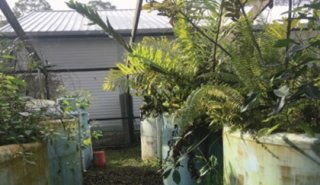Water Reuse to Support Environmental Restoration Resources

Climate change can have dramatic impact on aquatic habitats and coastal environments. Water reuse for environmental restoration can be used to sustain and develop ecosystems such as wetlands, create a buffer against storm surges, and support natural habitats. Environmental restoration can also include groundwater or aquifer recharge for protection from saltwater intrusion and stream flow augmentation to support wildlife habitats and source water protection.
Water reuse is the practice of reclaiming water from a variety of sources, treating it, and reusing it for beneficial purposes. The following resources relate to reuse to support environmental restoration; for information on other uses, please visit the Water Reuse Resource Hub by End-Use.
On this page:
Key Resources
The following are a sampling of the key water sector resources that are freely available to support water practitioners interested in developing water reuse projects to support environmental restoration. Visit the Water Reuse Information Library for additional water reuse materials.
- 2025 Risk Based Framework for Developing Microbial Treatment Targets for Water Reuse – This EPA document provides detailed scientific information that states and Tribes can use to develop risk assessments and microbial treatment targets that support safe potable and non-potable water reuse.
- Water Recycling for Climate Resilience Through Enhanced Aquifer Recharge (EAR) and Aquifer Storage and Recovery (ASR) (2023) – This EPA publication summarizes different technical and policy considerations influencing how recycled water can be used to recharge groundwater. It includes a discussion of EAR and ASR drivers, current practices in the U.S., potential subsurface water quality changes and technical considerations, treatment needs, and regulatory considerations.
- Aquifer Storage and Recovery-Managed Aquifer Recharge (ASR-MAR) Webinar (2022) – The ASR-MAR webinar for states featured a panel comprised of leaders across the water sector, including the Ground Water Protection Council (GWPC), Texas Commission on Environmental Quality, EPA, and Eastern Research Group, Inc. Panelists shared insights from GWPC’s ASR-MAR Workgroup and prior webinars, highlighted future focus areas, and encouraged participants to share experiences with ASR-MAR in their states.
- Enhanced Aquifer Recharge of Stormwater in the United States: State of the Science Review (2021) – Groundwater aquifers throughout the U.S. are being overused and depleted. There is growing interest in enhanced aquifer recharge (EAR) to augment drinking water supplies, replenish groundwater, and restore streamflow. This EPA report focuses on one aspect of EAR: the intentional recharge of aquifers using stormwater from developed lands (as opposed to agricultural/rural).
- Tools for Planning, Development, and Improvement of ASR Projects: Siting and Recovery Efficiency Assessments Webinar (2021) – Presenters in this GWPC ASR-MAR Workgroup-hosted webinar discussed the statutory and rule-based requirements for the Texas Commission on Environmental Quality (TCEQ) to make a determination of an ASR project's stored water recoverability as a condition of the ASR authorization. Participants introduced a new ASR recoverability analytical tool developed by TCEQ in collaboration with the University of Texas at Austin.
- Managed Aquifer Recharge in California: Long-Term Projects & New Emphasis Under New Groundwater Law Webinar (2021) – The GWPC ASR-MAR Workgroup hosted this webinar that focused on MAR in California and exploration techniques for targeting recharge areas. Topics included the legal framework for aquifer recharge, long-term managed aquifer recharge projects in California, and new technological developments being implemented in the state.
- Understanding and Minimizing Arsenic Mobilization in ASR Projects Webinar (2021) – GWPC’s ASR-MAR Workgroup hosted presenters from the University of Texas at Austin to discuss arsenic mobilization during managed aquifer recharge. Speakers presented a framework for developing a site-specific conceptual model of arsenic mobility to understand and mitigate potential risks to water quality.
- ASR & Aquifer Recharge Wells in Florida Webinar (2020) – GWPC’s ASR-MAR Workgroup hosted an Underground Injection Control (UIC) Program Analyst at Florida's Department of Environmental Protection who introduced Florida groundwater dynamics and motivations behind aquifer recharge practices. Topics covered in this webinar include purposes of ASR and comparisons with aquifer recharge, regulatory aspects, types of fluid stored, water quality monitoring and cycle testing, and case studies from the state of Florida.
State Water Reuse Regulations and Guidelines
The following states developed guidelines and regulations for water reuse to support environmental restoration. Click the links from the REUSExplorer to review summary documents, which include the state regulations authorizing the use of recycled water for the purposes of environmental restoration, water quality and treatment specifications, definitions, and more!
Project Examples
The “Living Machine®” at Corkscrew Swamp Sanctuary Treats Wastewater for Onsite Non-potable Reuse (Southwest Florida)

Corkscrew Swamp Sanctuary contains a system—a “Living Machine®”—that treats wastewater generated onsite from the facility restrooms and recycles it for toilet flushing, effectively reducing demand on potable, freshwater supplies and helping to conserve groundwater. As visitor attendance at the sanctuary increased, the amount of wastewater generated onsite also increased to a level beyond the capacity of the old septic system. The sanctuary responded by installing an innovative treatment system, the Living Machine®, that employs plants and microorganisms instead of a traditional onsite wastewater treatment system. The Living Machine® also provides other benefits, such as educating the sanctuary’s visitors about the ability of natural wetlands to improve water quality and being aesthetically appealing.
Developed by The World Bank in June 2023
